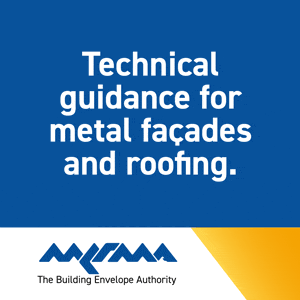Changing times for bathroom specification
- Specify & Build
- Sep 12
- 3 min read
Jamie Sandilands, Specification Director at Multipanel, explores how bathroom specification trends are changing when it comes to bathroom wall finishes.

Q: What’s driving the shift in how developers are specifying bathrooms?
I see it daily in discussions with developers and specifiers across the UK. A major driver is the updated guidance from the NHBC. Now, if you’re installing showers with a flow rate above 12 litres per minute, you must include an impermeable waterproof layer behind the wall surface to reduce the risk of water ingress, which can cause serious long-term structural damage. It’s bringing fresh scrutiny to how bathrooms are built, especially wall finishes.
Q: How is this impacting traditional tiling?
Tiles have long been the default for bathroom walls; they are versatile, familiar, and with countless style options. But under the new NHBC requirements, simply fixing tiles onto standard boards is no longer enough. You either need marine-grade backer boards or a full tanking membrane system. Both work, but come with extra materials, more labour and, crucially, additional time on site. These complexities are tightening build schedules that were already under pressure.
Q: Why is installation time becoming such a hot topic?
On large sites every new process matters. Applying tanking membranes, for example, adds drying times that weren’t there when tiling went straight onto plasterboard. Across a 500-home prokect, for example, this can result in hundreds of additional days, delaying plots, affecting cash flow, and stretching resources. It’s why many developers are actively exploring alternatives that maintain compliance but streamline the process.
Q: How do pre-finished wall panels change the equation?
Pre-finished waterproof wall panels such as Multipanel are gaining serious traction. Multipanel can be installed directly onto standard substrates with no tanking, adhesives or grout needed. To meet NHBC requirements, wall panel products must carry independent certification like UKCA, UKNI or CE marking to EAD 030437-00-0503, proving they’re watertight and durable.
We recently modelled a 500-home project where switching to Multipanel cut around 1,000 days from the programme simply by removing membrane installation and drying stages. That’s a huge operational benefit.

Q: Is cost still a barrier versus tiles?
It’s a common misconception. Once you factor in tanking systems or marine boards, plus extra labour and extended schedules, the cost equation flips. Recent comparisons for Multipanel show installed cost savings of £175 to £235 per bathroom. Across a full programme of 500 homes, that means first-year savings of £87,000 to £117,000 — not even counting reduced site overheads from shorter builds.
Q: What about compliance and long-term assurance?
The NHBC’s goal is to protect structures from moisture damage over decades. That’s why using systems proven to perform long-term is critical. Panels such as Multipanel meet rigorous EAD standards, having been independently tested to resist water ingress under tough conditions , cutting the risk of future call-backs. Beyond that, Multipanel comes with a 30-year guarantee.
Q: Are there sustainability advantages?
Absolutely. Tiling uses more water, generates more waste through cuts and grout, and leaves a heavier material footprint. Panels can have up to 60% less environmental impact, thanks to lower water use, fewer materials, and easier recycling at end of life.
Q: Do panels really compete on aesthetics?
Modern panels have come a long way, with finishes that mimic marble, concrete, stone, even tile layouts, so closely they’re almost indistinguishable. Unlike tiles, there’s no risk of mismatched grout lines or cracking. You get a seamless, easy-to-clean surface that appeals to both minimalists and maintenance teams.
Q: Where does this leave tiles?
Tiles aren’t disappearing. But with tougher standards, tighter schedules and rising costs, the conversation has shifted. It’s no longer just about which finish looks best, it’s about what works best for the build, meets compliance, and keeps the programme on track.
.png)























































.png)

